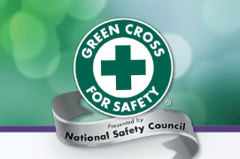 In 2014, across all industries, more than 4,000 workers died on the job, according to the latest edition of Injury Facts®. While this is an improvement over the 14,000 annual deaths in the 1970s, we still have work to do. Just this fiscal year, more than 100 people have died on the job, according to government data.
In 2014, across all industries, more than 4,000 workers died on the job, according to the latest edition of Injury Facts®. While this is an improvement over the 14,000 annual deaths in the 1970s, we still have work to do. Just this fiscal year, more than 100 people have died on the job, according to government data.
The Occupational Safety and Health Administration enforces workplace safety standards by holding employers responsible if they fail to provide a safe workplace. Maintaining OSHA compliance is serious business – no employer wants to be at the receiving end of an OSHA violation – but ultimately employers and OSHA want the same thing: A safe and healthy workforce.
OSHA Top 10
OSHA rankings for the Top 10 most cited violations change little from year to year, but the data is always compelling.
The most frequently cited hazards for 2016 are:
- Fall Protection
- Hazard communication
- Scaffolding
- Respiratory protection
- Lockout/tagout
- Powered industrial trucks
- Ladders
- Machine guarding
- Electrical wiring methods
- Electrical general requirements
Safety+Health magazine offers many more statistics surrounding OSHA’s Top 10.
Make Training More Engaging
An ongoing safety training program for all employees can stop incidents before they happen when the No. 1 goal of training is hazard awareness. But it also can be difficult to engage employees so they retain the information. The subject matter is often the same year after year, so how do you keep it fresh?
- Use visuals: video clips, photos, signs

- Bring in a guest speaker with a compelling story
- Dare to be different; look at other organizations’ methods and do them better
- Make sure management participates to help solidify a safety culture from the top down
OSHA compliance training offered by NSC exceeds standards in most cases and is trusted worldwide. Learn more.
Go Beyond Compliance
Failure to identify and correct hazards in the workplace can lead to serious injury and death. Ultimately, it’s not just compliance with OSHA regulations employers should strive for, it’s injury prevention.
The key to preventing these incidents is planning, observing and establishing a safety culture. Safety is not a destination, it’s an ongoing Journey. Learn about our Journey to Safety Excellence program.
World-class organizations use leading indicators to help shape their safety culture. Four members of the Campbell Institute at NSC describe leading indicators they track and how those have affected their safety outcomes. Read more.
What if Someone is Injured?
 Reacting quickly to an incident with a prescribed procedure can demonstrate your company’s commitment to safety and ensure the proper information is collected to prevent future incidents.
Reacting quickly to an incident with a prescribed procedure can demonstrate your company’s commitment to safety and ensure the proper information is collected to prevent future incidents.
Through OSHA and the National Safety Council Alliance, NSC has put together this guide on the steps to take during an incident investigation, including who should conduct the investigation, who should be interviewed, how to document the scene, and how to use the results to better identify hazards and prevent future injuries.
Inspiring Excellence in Safety
 The National Safety Council will present its 2017 Green Cross for Safety awards this spring in California. Three finalists will be named in each category: Excellence in Safety, Safety Innovation and Safety Advocate. Please consider attending the Green Cross for Safety Gala to recognize those who have made our homes, communities, workplaces and roads safer.
The National Safety Council will present its 2017 Green Cross for Safety awards this spring in California. Three finalists will be named in each category: Excellence in Safety, Safety Innovation and Safety Advocate. Please consider attending the Green Cross for Safety Gala to recognize those who have made our homes, communities, workplaces and roads safer.